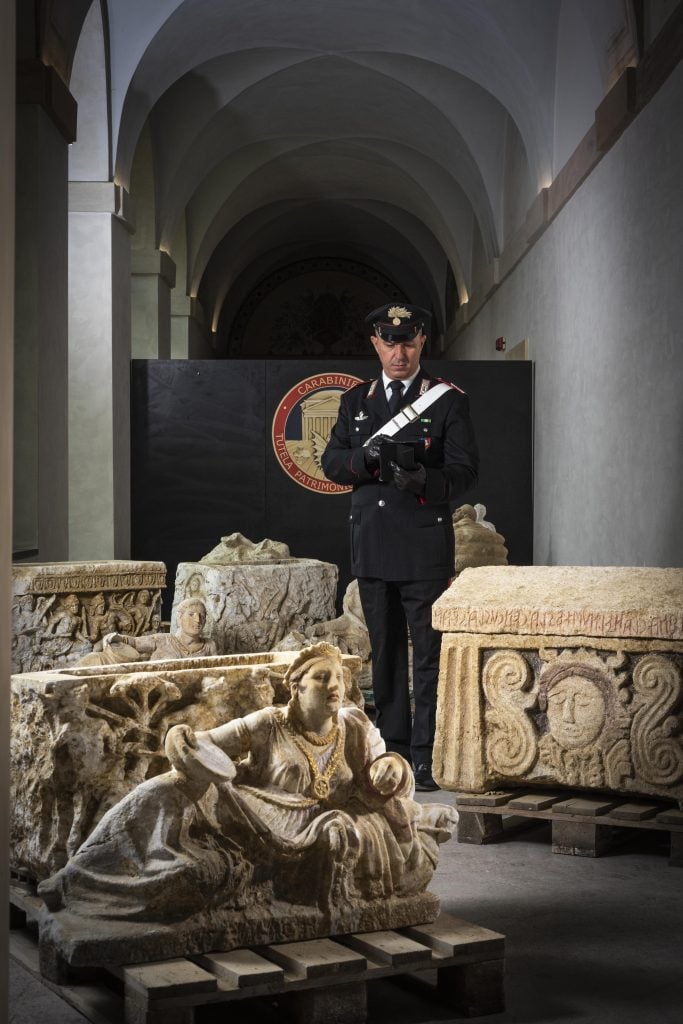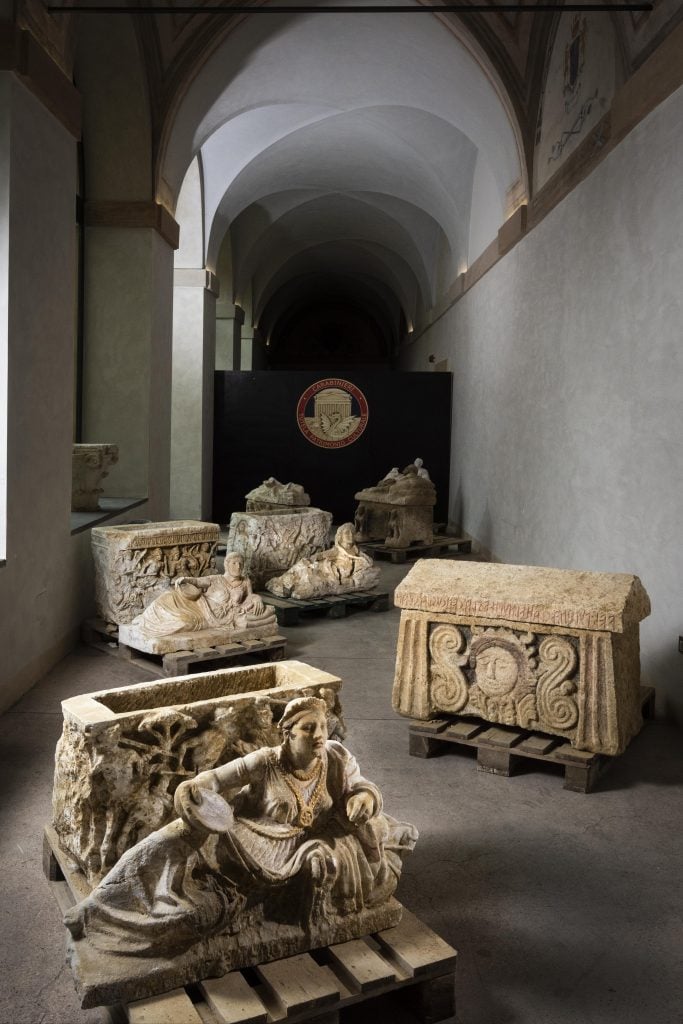
20 Nov Italy Recovers Illegal Etruscan Artifacts Worth $8.5 Million
Source Credit: Content and images from Artnet News. Read the original article - https://news.artnet.com/art-world/italy-etruscan-artifacts-2572934
Italian authorities have seized an illegal excavation site of an Etruscan necropolis between the Tuscan towns of Chiusi and Città della Pieve. They recovered several objects bound for the black market and worth an estimated $8.5 million, the Carabinieri police force announced Tuesday.
Authorities launched the investigation in April after receiving photographs depicting urns with reclining figures, typical of Etruscan culture, that were circulating on the black market. At the site they found artifacts dating back to the Hellenistic period of the third century BCE, including two sarcophagi, believed to be of Etruscan princesses, a burial trousseau complete with urns with battle and hunting scenes, perfume jars, and a comb made from bone.
“The recovery operation of today’s urns is considered by experts to be one of the most important recoveries of Etruscan artifacts ever made during an investigative action,” the Carabinieri said in a statement.

Italy’s Carabinieri has found the site of an illegal excavation of an Etruscan necropolis. Photo courtesy of the Italian Carabinieri
Police sought the scientific expertise of a professor at the University of Rome, Tor Vergata, who helped them realize that the objects likely came from a necropolis, or city for the dead, and probably from around Chiusi. However, they were able to pinpoint the excavation site thanks to a farmer who, in 2015, was plowing his land in Città della Pieve and discovered an Etruscan hypogeum—a type of underground burial chamber—where four funerary urns and two sarcophagi were found. Investigators then tracked down the owner of the nearby land, a business owner who owned a company that had earthmoving equipment.
Investigators determined that the extent of an excavation that would lead to the discovery of the black-market artifacts would likely require heavy machinery to dig up and transport due to the weight and size of the urns. Quickly, a local entrepreneur who owns a company that authorities described as “capable of carrying out earthmoving” became a top suspect.
In their research, investigators discovered that the businessman also owned property adjacent to the 2015 hypogeum discovery. Police then tapped the man’s phones, surveilled him, and used a drone to survey the area and find the precise site of the dig.
Two people have been identified as potential perpetrators, the police said, and are facing charged with the theft and receiving of cultural goods.

Italy’s Carabinieri has found the site of an illegal excavation of an Etruscan necropolis. Photo courtesy of the Italian Carabinieri
The items discovered by the farmer in 2015 could be traced to the name Pulfna, a prominent Etruscan familial clan, but were most likely male burials. A preliminary scientific study of the urns found at the illegal site conducted by archaeological officials from the Ministry of Culture confirmsed that the objects belong to a single funerary context and are also attributable to the Pulfna family.
The urns are made of Umbrian white travertine and are partly decorated in high relief with scenes of battles, hunting, and depictions of the myth of Achilles and Troilus. Some retain polychrome pigments and gold-leaf coverings.

Italy’s Carabinieri has found the site of an illegal excavation of an Etruscan necropolis. Photo courtesy of the Italian Carabinieri
The funeral trousseau is “particularly rich,” authorities said. It contains four bronze mirrors, one of which with the ancient deification of Rome and the she-wolf suckling Romulus, a balsamarium still containing organic traces of the perfume used in antiquity, a bone comb, bronze situlae and oinochoe, or buckets and pitchers, commonly used by Etruscan women during banquets and symposiums.
That the seized works are referable to a single hypogeum “make the archaeological, artistic, and historical value of the recovery itself particularly relevant,” according to the investigators.
The Etruscan civilization existed from about 900 to 27 BCE in central Italy, covering parts of modern-day Tuscany, Umbria, and Lazio. Many features of Etruscan culture were adopted by the Romans, their successors to power in the peninsula.
Source Credit: Content and images from Artnet News. Read the original article - https://news.artnet.com/art-world/italy-etruscan-artifacts-2572934

